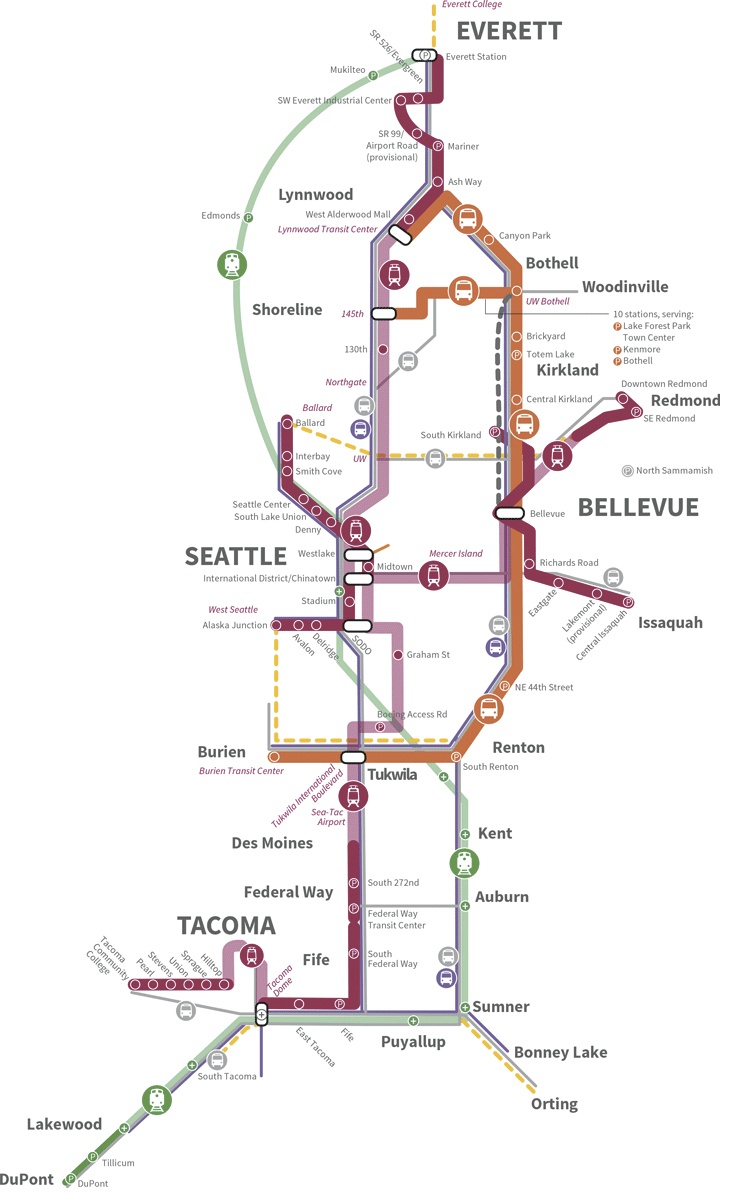Though Sound Transit CEO Peter Rogoff is new to the Puget Sound region, he is not foreign to its transportation issues, he told community members at the Mercer Island Chamber of Commerce lunch June 1.
Rogoff, appointed to the position in January after serving as federal transit administrator and transportation undersecretary, said he used to visit the region while working on the U.S. Senate Committee on Appropriations with Sen. Patty Murray. They looked at “vexing transportation challenges” like the Alaskan Way Viaduct, the idea to convert Boeing Field into a commercial airport and the “earlier troubling period” with Sound Transit.
The current challenge Sound Transit officials face is the same one that has been debated on the Island for the past few years: how to plan and build for growth and density, and maintain quality of life.
Rogoff said that improving mobility will be essential as the region plans to add one million people in the next 25 years. There will be a need to increase the capacity of the region’s most congested corridors with mass transit.
To that end, the Sound Transit board is going to voters in November and asking them to approve a $54 billion ST3 package to expand light rail, commuter rail and bus options across the region and buy into the agency’s “bold and expensive” vision. The alternative is to be overwhelmed by population growth and congestion, Rogoff said.
“This is going to be reflected in a debate about what vision this region wants to have for its future,” he said. “The one thing we know is that the additional citizens are coming. The question then is, what are we going to do about it?”
Mercer Island, which is scheduled to have light rail service beginning in 2023 per the voter-approved East Link in the ST2 package, will be a sort of “poster child” for that vision, Rogoff said. He said that he is aware of the lingering questions on Mercer Island, and has had meetings with Mayor Bruce Bassett about access to I-90, among other issues.
Light rail will run on the existing I-90 center roadway across Lake Washington, to which Islanders currently have preferential access, and new HOV lanes will be constructed on the I-90 outer roadways. Some Islanders still have concerns about the ability of the bridge to structurally support light rail, though the issue has been studied by several groups, including an independent review team the Washington state Legislature appointed.
Recently, the Sound Transit board heard from citizens — including about 37,000 online survey respondents, Rogoff said — that they want more transit options, and they want them sooner rather than later. At its June 2 meeting, the board approved amendments to the ST3 Draft Plan that would speed up deliveries by a few years: Redmond and Federal Way will see light rail four years sooner (2024), Tacoma (2030), West Seattle (2030) and Ballard (2035) three years sooner and Everett (2036) five years sooner than the plan released in late March. The expedited timeline increased the cost from $50 billion to $54 billion.
The board will take its final vote to send ST3 to the November ballot on June 23.
Rogoff said that in his experience at the federal level with constructing transit systems, the conversation usually moves from skepticism to enthusiasm — from “Should we build this?” to “Where should we build this next?”
Sound Transit is already facing issues with its recently opened Capitol Hill and University of Washington stations, though they are the types of problems that transit agencies wish to have, he said.
“Our biggest operational challenge right now is making sure we have enough rail cars to run three car trains for peak periods,” he said, noting that ridership is 15 percent above estimates. “We’ve had Fridays where we’ve topped 72,000 riders … What we’re finding is that when we build out the system, people very much want to take it.”
Rogoff said that one of his main priorities will be a state of good repair. He said that other systems, including the Metro in Washington D.C., have faltered due to underinvesting in maintenance and upkeep.
Other investments outlined in ST3 include new Bus Rapid Transit on I-405 and “the most ambitious expansion of parking facilities that the agency has had, north of $600 million,” increasing the number of parking spots by 70 percent, Rogoff said. Many park and rides are full by 7:30 a.m., he said.
Sound Transit will also work with agencies such as King County Metro to provide bus connections to the rail stations.
For more, visit soundtransit3.org.


